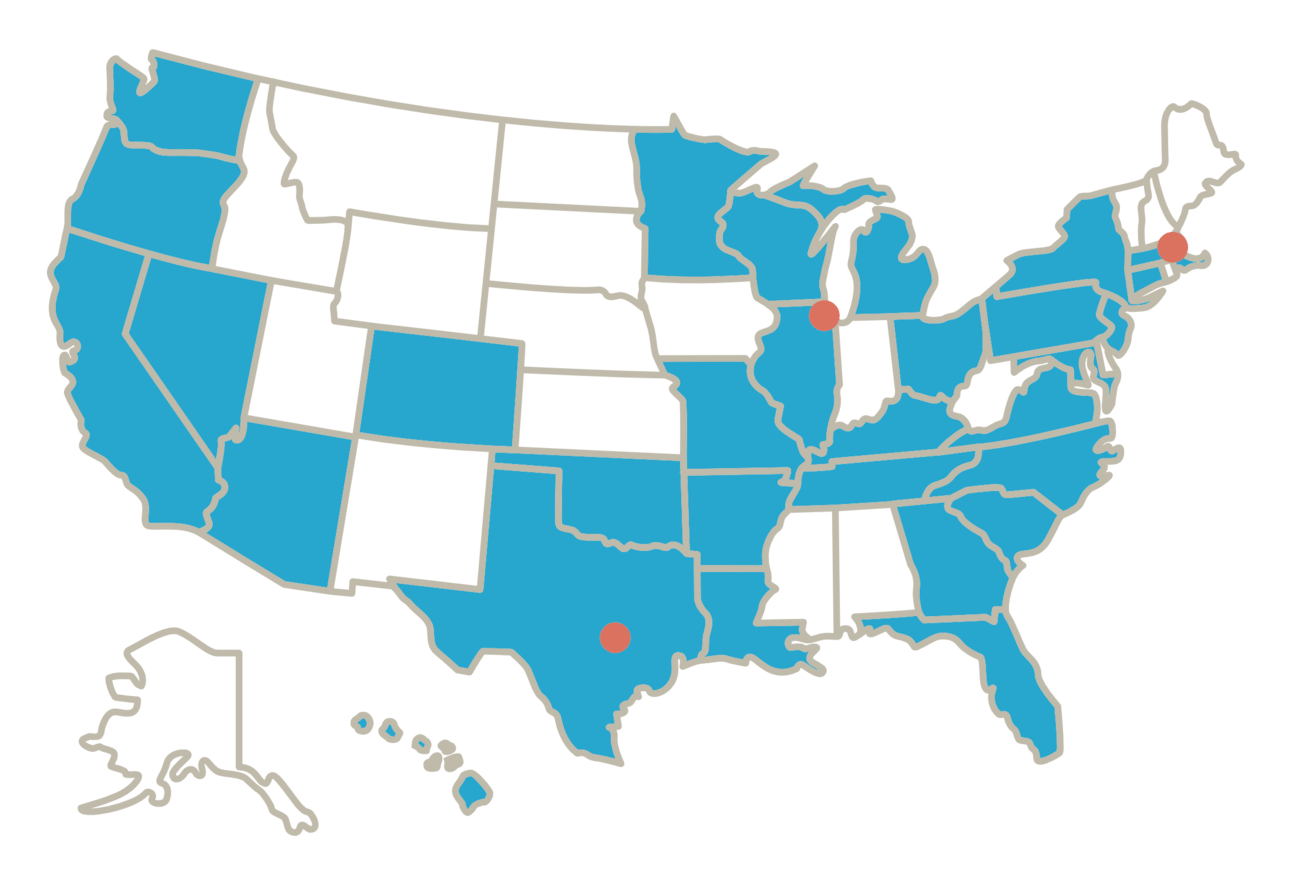Welcome to The Weekly Journey - your two-minute journey through the world of mobility and beyond. Use it to stay informed, find a new go-to source, or just have a peek inside how we think. Brought to you by the team at Journey.
A Journey insight. 💡
Lauren recently caught up with Peter Richards of Parkicity to pick each other’s brains about curbside management best practices and oddities, plus their favorite and least favorite things happening at the curb. An excerpt of their conversation is below.
How can cities manage the explosion in deliveries of all kinds as well as other curb uses?
Lauren: I think about this a lot: is it theoretically possible to service the huge boom in deliveries of goods and people we are seeing? The paucity of information about the quantity and location of those demands is our biggest blind spot. It appears loading stopping is now surpassing circling for parking as one of our most disruptive curb uses and yet it's the one our management and pricing tools most struggle to deal with – at scale at least.
In some cities it’s now become culturally acceptable due to lack of enforcement that a vehicle can pause nearly anywhere at any time for drop-off of some kind. The culture of our roads has changed dramatically due to the rise of TNCs and the delivery economy – with no repercussions for double parking. It’s a fundamental culture change of how drivers use streets. It has implications for how to protect bike, transit, and pedestrians – we have to assume any open curb can be blocked at any time and therefore separate uses more. That reduces some of the viability of prior flex zone concepts, in my experience.

Pete: I also think about this. I used to do a lot of traffic operations work and signal timing coordination. You would try to optimize for peak hour volumes and flows, while balancing the needs of side street pedestrians (especially by schools). Some traffic cycles would have little to no main street volume while others would seemingly have a massive queue due to side street green time. It varied quite a bit, and despite technology to try and make it dynamic, it was (and will likely always be) an imperfect system. I think the same can be said about the curb. Yes, there are recognizable time of day and day of week patterns, but travel patterns are dynamic – weather, transit impacts, delivery surges, events, etc. – that even with dynamic curbs, the variety of demands will almost never match the supply. Perhaps this can be solved with cities moving towards dynamic curbs vs. the static curbs they have today, aligned with pricing. Perhaps more uses will need to happen off-street or on-site. I think progressive cities and technology can support a lot of this, but to your point, the ad hoc nature of things and the rigid aspect of the curb regulations aren’t aligned quite yet.
What’s one curb policy that seemed like a great idea but totally flopped in practice?
Lauren: The longer I practice, the harder time I have justifying residential permit parking programs. Interestingly, when they were first established in the US in the 1970s, they faced significant legal challenges on constitutional grounds. The issue made its way to the Supreme Court and courts had very differing opinions on its legitimacy. A ruling eventually paved the way for widespread adoption as long as cities show a rational connection to legitimate public interest. With technology options today I find it a bit of a stretch that resident-only permits with no public pricing option can truly be in the public interest. I find in practice it’s a nearly impossible issue to get right – the window for successful, sound policy making is quite narrow.
Pete: Curb reservations for delivery vehicles. On paper, it’s elegant: book a space in advance, guarantee access, reduce circling. But in reality? Deliveries and travel times are so variable and unpredictable that actually making your time slot is a challenge. A few cities rolled out systems without enough education, pricing strategy, or enforcement. Reserved spots sat empty, while drivers unfamiliar with the system or without the app then double-parked next to them. The tech was usually built before the rules were clear, and the rules didn’t always match how curb space actually functions. I still believe in the idea, but only if it’s paired with real-time flexibility, clear communication, and some carrots (like discounted reservations) and sticks (like enforcement or time limits). Otherwise, it's a "great-on-slide-deck, messy-on-street" kind of policy.
What’s one change to curb space you think would cause instant public uproar - but is actually justified?
Pete: Paid parking in general still seems to be a hot topic, especially in smaller municipalities. Same with free on-street residential parking. But in terms of an uproar, I would say something around the issuance, monitoring, and payment associated with accessible parking. It is a justified use and access is crucial, but many studies have shown the misuse of these passes and placards, with some people keep the placards of their deceased relatives, or getting unwarranted extensions from their doctors. The technology exists for payment and enforcement, and studies in some cities have shown that cracking down on the misuse of these spaces would free up a lot of on-street curb space.
Lauren: You sound like you’re primed for Shoup’s third pillar of parking benefit districts! True – we need to continue to get better at telling the story of why charging is needed. Regarding accessible parking – good point. I was involved in a couple of policy efforts on the topic informed by disability advocates and transportation planners alike. I came to think a two-tiered solution helpful where the free parking placards are rigidly focused on those with dexterity hurdles – and there are so many ways to improve accessibility for everyone else in other ways, including zone siting and design details.
Check out the full conversation on the Journey Insights page and a quick intro video on LinkedIn.
A few interesting things. 🧠
🚚 Delivery: Lots of rapid evolution in the local delivery space. Amazon is making a big play in rural markets. Walmart is experimenting with smaller distribution hubs as it expands its rapid delivery offerings.
🏘️ Housing: Construction Physics dives into the high cost of housing in the Western US.
🚌 Better Buses: WMATA created a must-watch behind-the-scenes video of what goes into launching a redesigned bus network.
🛣️ Road Safety: Hannah Younes at Voorhees shares findings from their analysis of the relationship between speed limits and fatality rates by mode in New Jersey.
📣 Engagement: Some reflections on community engagement practices from Zoe Baldwin.
A quick Journey update. 🏗️
👩🏫 Upcoming Events:
Lauren will be attending and presenting at the ACT Annual International Conference in New Orleans, which starts on August 3. Lauren will be featured on multiple panels - stay tuned for details!
Lauren will also be at the Moveability Summit in Austin on September 19. Make sure to check out her panel on Best Practices for Employee/Student/Residential Pass Programs.
Dan will be in Boston during the APTA TRANSform Conference on September 14-17.
📚 Book Clubs:
Chicago City Builders Book Club: The City Builders had an engaging conversation about the world of Chicago politics with author Gregory Berg last night. Moving forward, the club will meet about every six weeks. Next up - The Loop by Patrick T. Reardon on August 14. RSVP here and make sure to follow the new LinkedIn page.
ACT Book Club: Journey founder Lauren Mattern hosts the monthly Association for Commuter Transportation Book Club. Join us for an upcoming discussion of Killed by a Traffic Engineer on on July 9th at 3:00 PM Eastern, with a special appearance by author Wes Marshall. Sign up here and earn 1 TDM-CP credit for attending.
Did someone forward you this newsletter? Be sure to subscribe to get The Weekly Journey in your inbox or follow us on LinkedIn.


